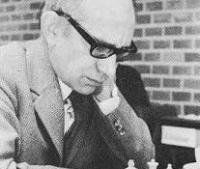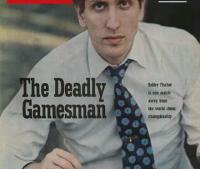
Hypermodernism
After World War I, a group of players came to fame whose ideas were to cause a considerable revision in chess thinking. Aaron Nimzowitsch (1886-1935), Richard Reti (1889-1929), and Gyula Breyer (1894-1921) headed the school. Also Saviely Tartakower (1887-1956) with his Die Hypermoderne Schachpartie was its entertaining promoter. Its supporters were Alekhine, Bogoljubow, Grunfeld, and Saemisch among others. Their influence helped form chess as it is played today. Chess players were wanting to know what was the truth about 1.e4 or 1.d4. Those were the orthodox moves for opening a chess game. Steinitz’s principles and afterwards Tarrasch had said the center had to be seized, the pieces had to come out, first the Knights, then the Bishops. Then came, as named by Tartakower, the “Hypermodern School.”
The hypermoderns agreed that it was necessary to control the center. But, they insisted, it could be done otherwise than by 1.e4 or 1.d4. Do not create a pawn center that can only be attacked. The New Idea in chess postulated that the important thing was the solidity of the center rather than its extent. The advance of the central Pawns can be deferred with advantage, provided that the opponent is not allowed to build up an impregnable center. Instead of physical occupation, white looked for control of the center. This was achieved with the fianchetto of the Bishop, where positioned on long diagonals it menaced the opponent’s center. This necessitated an entirely different kind of strategy.
The ideas listed are the basis for the majority of actual defences against 1.d4: Nimzo-Indian, Queen's Indian, Bogo- Indian, King's Indian, Grunfeld, Benoni and Modern Benoni. Versus 1.e4: Alekhine Defence, Pirc Defence and Nimzowich Defence. It is important to say that much of the popularity of Hypermodern defences with black is because after 1.d4 the square e4 is weaker than the square d4 when white plays 1.e4. In this latter case the white Queen supports the “d” pawn advance.
Now three famous games from the founders of “Hypermodernism:”
Here is a short historical quiz for you:
What is the historical significance of this last game?
Which hypermodernist's picture is seen at the beginning of this article?
How many openings can you think of named after one of these three players?






